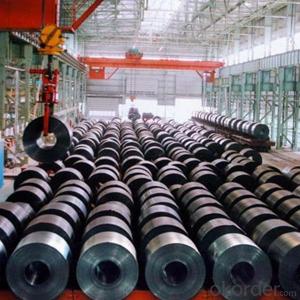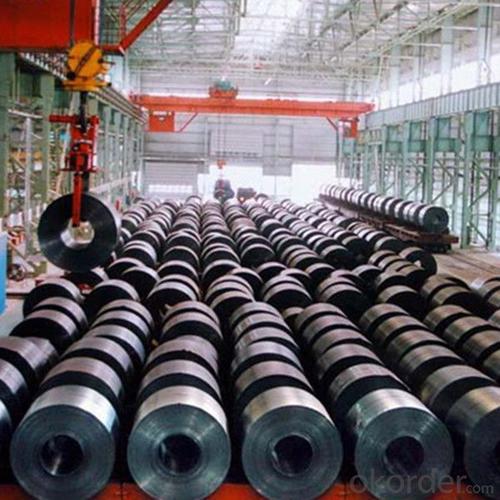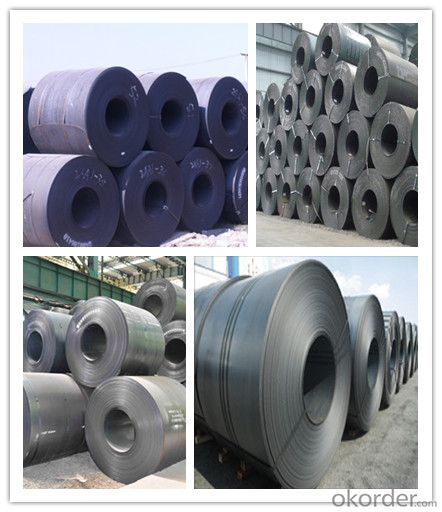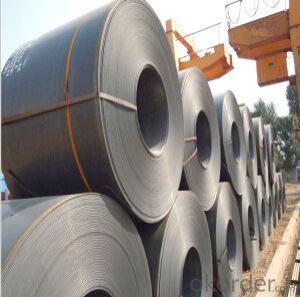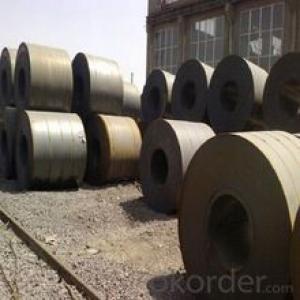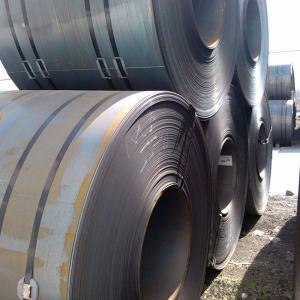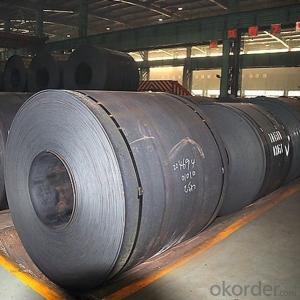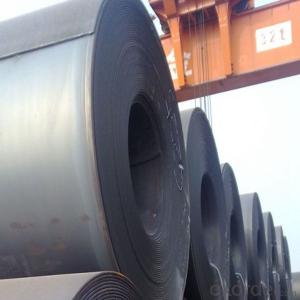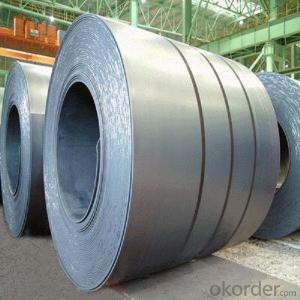Hot Rolled Carbon Steel Coil Ss400 2mm Thickness
- Loading Port:
- China main port
- Payment Terms:
- TT OR LC
- Min Order Qty:
- 23 m.t.
- Supply Capability:
- 50000 m.t./month
OKorder Service Pledge
OKorder Financial Service
You Might Also Like
Specification
Prime Hot rolled carbon steel coil
Specifications:
1. Thickness: 0.1-200mm
2. Width: 20-2000mm
3. Length: 1-12m or as require
4. Grade: Q195, Q235, A36, SS400, Q345, ST37-2, etc
5. Coil ID: 508mm/610mm
6. Coil Weight: 2-8ton
7. Tolerance of thickness: +-0.03mm
8: Tolerance of width: : +/-5.00mm (aiming to +/-2.00mm)
9. Standard: ASTM, AISI, JIS, EN, DIN, GB, BS, SUS
10. Certificate: ISO, BV, CE, SGS, SAI
Products Picture:
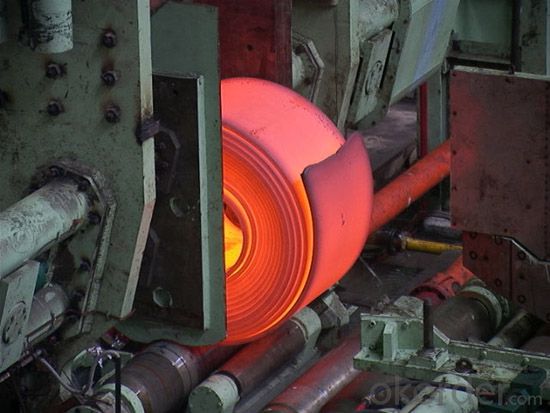
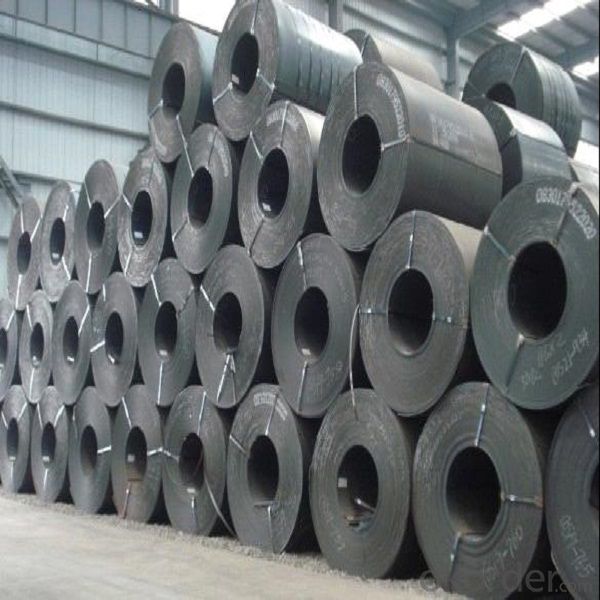
Application:
Floor board, factory stair boards, deck board, car boards, staircases, lorrybeds, elevator floors, general fabrication
Products Decription:
| Product: | Quick delivery 5mm thickness hot rolled steel sheet |
| Material: | Q195,Q235,A36,SS400,Q345,ST37-2,etc |
| Grade: | SS400 |
| Standard : | JIS G3002 GB/T251B,SS400,DIN |
| Technique: | hot rolled |
| Thickness | 0.1mm to 200mm |
| Tolerance of thickness: | +/-0.03mm |
| Width: | 20mm-2000mm |
| Tolerance of width: | :+/-5.00mm (aiming to +/-2.00mm) |
| Normal width: | 914mm, 1000mm, 1200mm, 1219mm, 1250mm,1500mm |
| Length: | 1-12m or According to requirement |
| Coil ID: | 508mm-610mm |
| Coil Weight: | 4~8 Metric Tons |
| Surface: | Black, Chromate, fingerprint resistant treatment, slight oiled or non-oiled, dry |
| Port of Loading: | Tianjin port |
| Packaging Details: | Standard export packing or according to clients required |
| Delivery Time | within 10 days after receiving 30% deposit |
| Payment Terms: | T/T Or L/C at sight ,Kunlun bank |
- Q: I'm a big fan of stainless steel and sterling silver, but not of the humidity of the country I'm in. Therefore I sweat more. Gross, I know. I'm buying a necklace chain for my ring.So does sweat contribute to tarnishing of silver and steel? The real kind?
- steel shouldn't really tarnish, it rusts and moisture increases that. Silver tarnishes when exposed to air and sulfur. Moisture increases the process a bit, but it happens anyway. Sweat is not gross, it's a necessary function of your body, otherwise you would die. A lot of sports people wear jewelry and they sweat a lot. If you wear the jewelry all the time, that will prevent the tarnish a bit. If you take it off, clean it (water and dish washing liquid), dry it and put it in a zip lock back to keep it away from air and moisture. In the end, cleaning the jewelry is quick and easy so don't worry about it.
- Q: What is the lifespan of coated steel coils?
- The lifespan of coated steel coils can vary depending on various factors such as the type and quality of the coating, the environmental conditions it is exposed to, and the maintenance and care provided. Generally, high-quality coated steel coils can have a lifespan of 25 to 50 years or even more. However, it is important to note that this is just an estimate and the actual lifespan may vary. Regular inspections, proper installation, and timely maintenance can significantly extend the lifespan of coated steel coils. Additionally, factors such as exposure to harsh weather conditions, corrosive environments, and improper handling can potentially shorten the lifespan. It is recommended to consult with manufacturers or industry experts to determine the most suitable coating and expected lifespan for specific applications.
- Q: What are the different types of steel coil coatings for heat resistance?
- There are several types of steel coil coatings available for heat resistance. These coatings are designed to protect the steel surface from high temperatures and prevent oxidation or degradation. One common type of coating is the organic coating, which is typically made of epoxy, polyester, or polyurethane. These coatings provide a protective barrier against heat and prevent the steel from corroding or oxidizing. Organic coatings are often used in applications where moderate heat resistance is required. Another type of coating is the inorganic coating, which is typically made of ceramic or metallic materials. These coatings provide excellent heat resistance and can withstand extremely high temperatures. Inorganic coatings are commonly used in industries such as automotive, aerospace, and power generation, where components are exposed to intense heat. There are also specialized coatings available for specific heat resistance requirements. For example, silicone coatings provide exceptional heat resistance and can withstand temperatures up to 600°C (1112°F). These coatings are commonly used in applications such as exhaust systems, ovens, and industrial furnaces. Additionally, some steel coil coatings may contain additives or fillers to enhance their heat resistance properties. These additives can improve the coating's ability to withstand high temperatures and provide better protection against heat-related issues. In summary, there are various types of steel coil coatings available for heat resistance, including organic coatings, inorganic coatings, and specialized coatings. The choice of coating depends on the specific heat resistance requirements of the application, and factors such as temperature range, duration of exposure, and environmental conditions should be considered when selecting the appropriate coating.
- Q: Steel roofing info. Pros and cons on steel roofing?
- Steel roofing Pro...life of product is much longer then Asphalt shingles....Looks great...multi colors.......Just love the stuff... Cons....More costly then singles at first but since it last longer it is really a better buy.......
- Q: How are steel coils used in the production of scaffolding?
- Steel coils are essential in the production of scaffolding as they serve as a primary raw material for manufacturing various components of scaffolding systems. These coils are typically made from high-quality steel and are used to produce tubes, pipes, and other structural elements that form the framework of scaffolding. The steel coils are first processed through a series of manufacturing operations, such as cutting, shaping, and welding, to transform them into the required dimensions and shapes for scaffolding components. These components can include vertical and horizontal tubes, diagonal braces, and base plates, among others. The tubes and pipes formed from steel coils are the main structural elements used to build the framework of the scaffolding. They are used to create the vertical uprights or standards, as well as the horizontal ledgers and transoms that connect them. These components provide the strength, stability, and load-bearing capacity required for workers to safely access and work at elevated heights. Additionally, steel coils are also used to manufacture diagonal braces, which are crucial for reinforcing the scaffolding structure. These braces are installed diagonally between the vertical standards and provide additional support and stability to prevent the scaffolding from swaying or collapsing. Base plates, another essential component of scaffolding, are also produced from steel coils. These plates are used as a foundation for the scaffolding structure, providing a solid and stable base to distribute the weight and load evenly. They are typically placed at the bottom of each vertical standard to ensure stability and prevent sinking or sliding. In summary, steel coils are a fundamental material used in the production of scaffolding. They are transformed into tubes, pipes, braces, and base plates, which form the framework and provide the necessary strength, stability, and load-bearing capacity required for safe and efficient scaffolding systems.
- Q: How are steel coils packaged for shipment?
- Steel coils are typically packaged for shipment by being tightly wound and secured with steel bands or straps. They are often placed on wooden skids or pallets to provide stability and protection during transportation. Additionally, protective covers or sheets may be used to shield the coils from moisture and other potential damages.
- Q: Why is it usually scorned by the shooting community to use steel cased ammo (like Wolf)? Always hear corrosive and steel is bad for the extractor/firing pin. Hulp a simpleton out!
- if you were going to shoot thousands upon thousands of steel cases in your rifle, it would cause more wear than brass cases do. but for the casual shooter, it won't be a significant factor. Corrosive ammo is another story (but not all steel cased ammo is corrosive, and any made after 1975 is not corrosive). shooting corrosive ammo in a bolt gun is simple to care for. When finished shooting, simply clean out the barrel, chamber and bolt face etc with hot soapy water, or military bore cleaner. This nuetralizes the corrosive chemicals. then dry it well, and then do your normal clean and lube with break free CLP or whatever other lube you prefer. But for a semi auto, gas operated firearm, the cleaning process takes hours, with having to tear it down and clean every part including gas tube etc. As for the ectractor, same answer as above, since an extractor slides in front of the rim as the cartridge is fed, it really does not add much more wear if it is steel. The firing pin does not contact the steel case, only the primer, so no additional wear there. The biggest problem with wolf ammo is encountered when you fire a lot of rounds quickly, building up a lot of heat, which can cause the lacquer sealent on the case to turn gummy and this in turn will cause problems for the firearm. Answer? first, use wolf ammo for casual shooting and clean the firearm extensively afterwords. Save your better ammo for real life situations. I understand that some of the newer wolf ammo does not use the same lacquer sealant. I believe it is called silver bear, but don't quote me becasue I can't swear that that is it. shoot safe
- Q: Are they made using the same processes, or is tempered steel made without the quenching process?
- Hardening is the preliminary process. The fully hardened state may be far too brittle for practical use. The tempering process is tailored to reduce the actual hardness, to introduce more flexible alloys. The tempering method employed may be done at relatively low temperatures, but some alloys require prolonged soaking at elevated temperatures. Some may be cooled in air, but others may require quenching to end the process.
- Q: I am refinishing a table and on my can of polyurethane, it indicates not to sand with steel wool prior to application. Why is that?
- Steel wool will leave invisible pieces of metal embedded in the finish, no matter how much you try to wipe it off. When you cover it with the polyurethane, it is trapped and turns dark over time, ruining the look of the table. Yeh, so follow the directions exactly for the best finish. Good luck!! : /
- Q: Can steel coils be used in the production of furniture?
- Furniture production can incorporate steel coils, which offer strength, durability, and stability. This raw material is commonly utilized in manufacturing different types of furniture like chairs, tables, and bed frames. Steel coils enable heavy-duty usage by providing the necessary resilience. Furthermore, their adaptability allows for various designs and sizes, granting versatility in furniture production. Transforming the coils into components such as frames or support structures establishes a solid foundation. Additionally, the use of steel coils in furniture production enhances aesthetics as they can be finished in diverse colors and coatings to match the desired style. Overall, steel coils are a prevalent and pragmatic choice for furniture manufacturers due to their strength, durability, and design potential.
Send your message to us
Hot Rolled Carbon Steel Coil Ss400 2mm Thickness
- Loading Port:
- China main port
- Payment Terms:
- TT OR LC
- Min Order Qty:
- 23 m.t.
- Supply Capability:
- 50000 m.t./month
OKorder Service Pledge
OKorder Financial Service
Similar products
Hot products
Hot Searches
Related keywords
